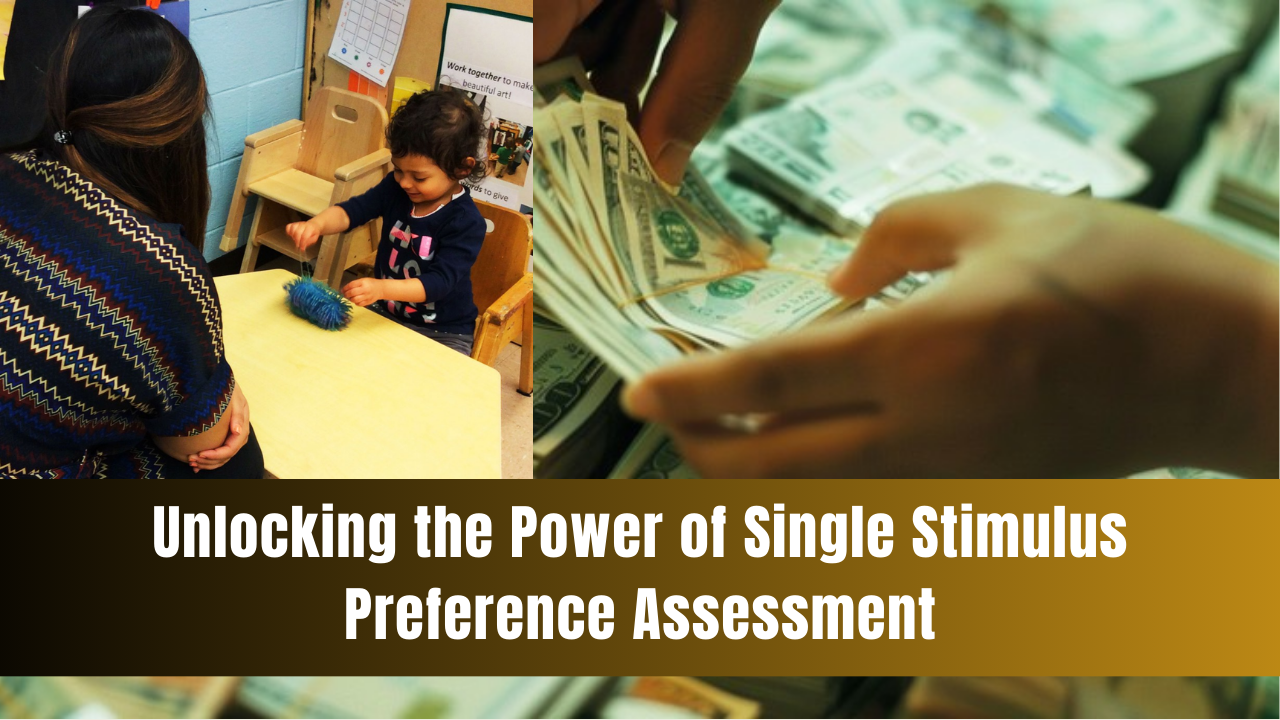Understanding what motivates someone can be a game-changer, whether you’re working in education, therapy, or even just trying to better communicate with a loved one. One of the tools experts rely on is the single stimulus preference assessment. But what exactly is it, and why is it so trusted? Let’s dive into this fascinating topic.
What is Single Stimulus Preference Assessment?
Single stimulus preference assessment, often referred to as “successive choice assessment,” is a method used to determine an individual’s preferred items or activities. It’s pretty straightforward: you present one item at a time and note the person’s reaction. This approach helps identify what can be used as a reward or motivation.
How It Works
Imagine offering a child a toy car and observing how they react. If they reach for it, smile, or engage with it in any way, that’s a good sign they like it. You then repeat this process with different items. By tracking these reactions, you build a list of preferences. It’s simple but effective, making it a popular choice among professionals.
Why Use This Method?
Why not just ask someone what they like? Well, that works sometimes, but not always. Some individuals, especially those with communication challenges, might not be able to verbalize their preferences. This method sidesteps that issue entirely. Plus, actions often speak louder than words. Seeing how someone physically responds can provide more accurate insights than asking them directly.
The Benefits of Single Stimulus Preference Assessment
Easy to Implement
One of the biggest advantages is its simplicity. You don’t need any fancy equipment or extensive training to carry out a single stimulus preference assessment. This makes it accessible for a wide range of practitioners, from teachers to therapists.
Accurate and Reliable
Because this method relies on observable behavior rather than self-reporting, it can be more accurate. It’s especially useful for working with individuals who have difficulty communicating their likes and dislikes. Over time, it provides a reliable way to understand someone’s preferences.
Versatile Applications
Single stimulus preference assessments aren’t just for kids. They’re used in various settings, including with adults in rehabilitation programs and even in animal training. Anywhere understanding preferences can improve outcomes, this method can be applied.
Implementing Single Stimulus Preference Assessment
Step-by-Step Guide
Want to try it out? Here’s a simple guide:
- Gather a variety of items that the person might like.
- Present one item at a time.
- Observe and record their reactions.
- Rotate the items to ensure each one is presented multiple times.
- Analyze the data to determine which items elicited the strongest positive responses.
Tips for Success
Consistency is key. Make sure you’re presenting the items in the same way each time to get reliable results. Also, consider the individual’s current state—someone who’s tired or hungry might not respond as positively as they would otherwise.
Conclusion
Single stimulus preference assessment is a powerful, easy-to-use tool that provides valuable insights into what motivates individuals. Whether you’re a parent, teacher, therapist, or anyone looking to understand preferences better, this method offers a straightforward and effective solution. By observing and recording reactions, you can unlock a deeper understanding of personal preferences and use that knowledge to enhance engagement and motivation.
FAQs
How often should single stimulus preference assessments be conducted?
It depends on the individual and the context, but regular assessments can help keep the data current and relevant, especially if preferences change over time.
Can this method be used with non-verbal individuals?
Absolutely! This method is particularly useful for individuals who have difficulty communicating their preferences verbally.
What types of items should be used in the assessment?
A variety of items should be used, including toys, food, activities, and sensory objects. The key is to have a diverse selection to gauge different preferences.
Is it necessary to rotate the items?
Yes, rotating the items ensures that each one is presented under similar conditions, which helps in obtaining reliable data.
Can single stimulus preference assessments be used in group settings?
While it’s typically used for individuals, with careful planning and observation, it can be adapted for small groups, although individual assessments may yield more precise results.

